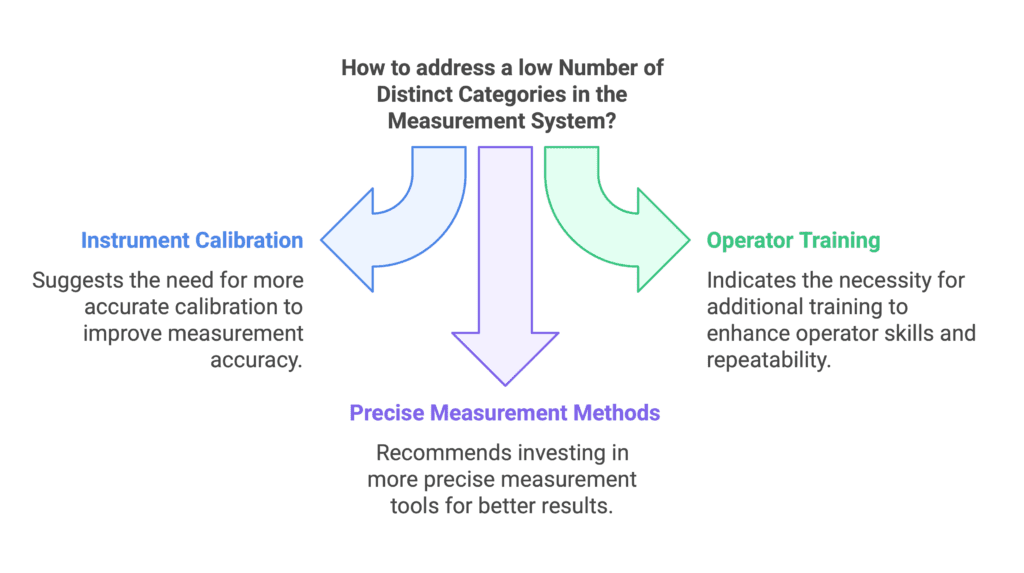Number of Distinct Categories (NDC) is a measure used in Measurement Systems Analysis (MSA). It provides an answer to the question of how well our measurement system can distinguish different levels of variability in a process.
But what exactly does this mean?
Simply put, it tells us how many distinct categories the measurement system can differentiate based on the measurement results.
How is NDC calculated?
We calculate NDC based on the ratio between part variation and measurement system variation. The formula is as follows:

where:
- PV (Part Variation): The standard deviation between parts.
- GRR (Gage Repeatability and Reproducibility): The repeatability and reproducibility of the measurement system.
Interpretation of the Number of Distinct Categories
Now that we know the formula, the most important part is interpreting the results. This is not complicated. Why? Because it can be divided into three simple categories:
- NDC < 2: The measurement system cannot distinguish between different levels of variability. We generally consider such a system insufficient.
- NDC = 2-4: The measurement system has limited capability to distinguish variability and may be insufficient for many applications.
- NDC ≥ 5: In such scenario, we consider the measurement system good enough to differentiate between different levels of variability.
Practical application of NDC
The industry often uses the Number of Distinct Categories to evaluate whether a measurement system is suitable for quality control. Here are a few examples:
- Instrument Calibration: If the value is too low, it may suggest the need for more accurate calibration of measurement instruments.
- Operator Training: A low score may indicate the need for additional training of operators to improve measurement accuracy and repeatability.
- Using More Precise Measurement Methods: In case of an insufficient result, the organization should consider investing in more precise measurement tools.

For example, if it is necessary to precisely monitor the dimensions of parts in a production process, and the current measurement system achieves an NDC below 2, this may lead to incorrect quality decisions. In such a scenario, improving the measurement system through better calibrations, training, and tools directly translates to ensuring high quality of the final judgment.
Summary
NDC is a crucial factor in Measurement Systems Analysis, helping to identify and improve the system’s ability to accurately distinguish levels of variability in a process. With proper interpretation and use of the Number of Distinct Categories, it is possible to significantly improve the quality and reliability of measurement systems in various industrial applications.
This is particularly important when conducting measurements for special characteristics.
If you want to learn more about measurement system analysis, we warmly invite you to our training
Source:
1. Measurement Systems Analysis (MSA) Manual – Automotive Industry Action Group (AIAG), Revision 4th, 2010.
Dariusz Kowalczyk


